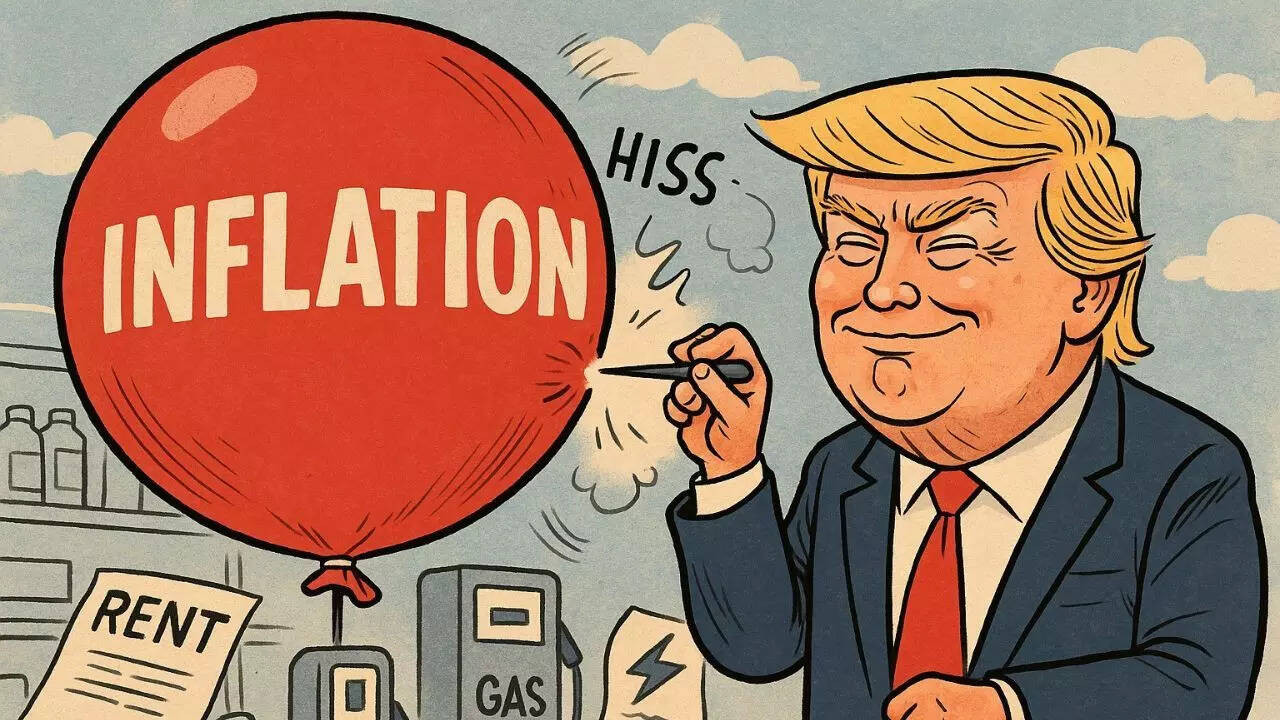US inflation eased to 3% in September, a welcome sign after two years of rapid price hikes. While not a complete victory, this slowdown offers hope for cheaper loans and greater budget stability for Americans. Globally, it signals a potential calming of economic turbulence, with implications for India’s economy as well.
Is the Inflation Beast Finally Tamed? Decoding the September Numbers
We’ve all felt it – the pinch at the pump, the shock at the grocery store, the overall sense that our money just isn’t stretching as far as it used to. Inflation has been the unwelcome guest at our financial table for far too long. But, just maybe, the tide is starting to turn. The latest inflation data from September offers a glimmer of hope, suggesting that the relentless upward march of prices might be losing steam.
So, what exactly does this mean for your wallet? Let’s unpack the key takeaways from the latest US inflation report and see if we can finally breathe a sigh of relief.
A Closer Look at the September Inflation Data
The headline numbers are encouraging. The Consumer Price Index (CPI), a key measure of inflation, rose 0.4% in September, which, while still an increase, is a slower pace than we’ve seen in previous months. More importantly, the year-over-year inflation rate clocked in at 3.7%, holding steady from August. While it’s not quite where the Federal Reserve wants it to be, it’s a considerable drop from the highs we experienced last year.
What’s driving this slowdown? Well, a couple of factors are at play. Energy prices, which have been a major contributor to inflation, saw a notable dip. This is good news for consumers filling up their cars and heating their homes. Furthermore, the core CPI, which excludes volatile food and energy prices, also showed signs of moderation. This suggests that the underlying inflationary pressures in the economy are beginning to ease.

What Does This Mean for Your Spending Power?
Ultimately, what we all care about is how inflation impacts our day-to-day lives. A slowdown in inflation, even a modest one, can translate into some much-needed breathing room. It means that the prices of goods and services are not rising as rapidly, which can help ease the strain on household budgets.
However, it’s crucial to remember that a slowdown in inflation doesn’t necessarily mean prices are falling. It simply means they are increasing at a slower rate. We’re still paying more for many things than we were a year or two ago. The real impact on your spending power will depend on several factors, including your income, your spending habits, and the specific goods and services you consume.
Think of it like this: imagine you’re running a marathon. The inflation rate is like the pace you’re running. If the pace slows down (inflation slows), it’s easier to keep up and you might even feel like you’re gaining ground. But you’re still running the marathon (prices are still high).
The Federal Reserve’s Next Move
The Federal Reserve (the Fed) has been aggressively raising interest rates to combat inflation. These rate hikes make borrowing more expensive, which in theory, cools down the economy and reduces inflationary pressures. The September inflation data will undoubtedly play a key role in the Fed’s next decision.
A continued slowdown in inflation could give the Fed reason to pause or even slow down the pace of rate hikes. This would be welcome news for homeowners with variable-rate mortgages and businesses looking to invest and expand. However, the Fed will likely want to see more consistent evidence that inflation is truly under control before easing up on its tight monetary policy.
To understand more about the Fed’s monetary policy tools, you can read more on our site about [understanding interest rates](link-to-related-article).
Navigating the Uncertain Economic Landscape
While the September inflation numbers are a positive sign, it’s important to remember that the economic landscape remains uncertain. Geopolitical tensions, supply chain disruptions, and other unforeseen events could still reignite inflationary pressures.
As consumers, the best thing we can do is to remain vigilant and adapt to the changing economic conditions. This might involve reassessing our budgets, prioritizing essential spending, and looking for ways to save money. Exploring deals, cutting unnecessary expenses, and being a smart shopper are always wise moves.
Is the Inflation Battle Won?
The September inflation report offers a cautiously optimistic outlook. While not a definitive victory, it suggests that the relentless rise in prices might be starting to abate. But the journey to price stability is a marathon, not a sprint. We need to remain vigilant, informed, and prepared to navigate the economic challenges that lie ahead. Only time will tell if the inflation beast has truly been tamed.






